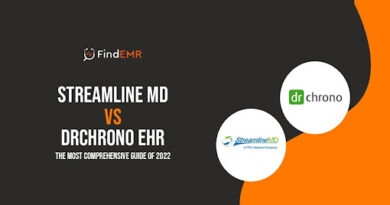Affordable Health Insurance: Key Steps to Finding the Right Coverage for Your Budget
Health insurance is a crucial investment in both your health and financial security. Unfortunately, the rising costs of healthcare have made finding affordable health insurance increasingly difficult for many people. However, with the right approach and knowledge, it’s possible to find an affordable plan that meets your needs without breaking the bank. In this article, we’ll walk you through the key steps to finding affordable health insurance and offer tips on how to reduce costs while securing the right coverage.
What Makes Health Insurance Affordable?
Affordable health insurance is a plan that provides essential medical coverage at a reasonable cost. The term “affordable” may vary depending on your financial situation and healthcare needs. A truly affordable plan balances the monthly premium with the cost of deductibles, co-pays, out-of-pocket maximums, and the services covered.
Having affordable health insurance ensures that you don’t face unexpected high medical expenses, and it offers access to essential healthcare services, such as doctor visits, emergency care, and preventive treatments. Without insurance, even routine medical treatments can result in costly bills, leading to significant financial hardship.
Where to Look for Affordable Health Insurance
There are several options available when it comes to finding affordable health insurance, and your best choice will depend on your circumstances. Here are some of the most common places to look for affordable health insurance:
- Health Insurance Marketplace: Established under the Affordable Care Act (ACA), the Health Insurance Marketplace offers a range of health plans for individuals and families. These plans are categorized by metal tiers (Bronze, Silver, Gold, and Platinum) that offer different levels of coverage. Based on your income, you may qualify for subsidies that can help reduce your premiums and make coverage more affordable.
- Medicaid and CHIP: Medicaid is a government-run program that provides health coverage for individuals and families with low incomes. The Children’s Health Insurance Program (CHIP) provides coverage for children in low-income families. Eligibility for these programs varies by state, and they often offer comprehensive coverage at little to no cost to the insured.
- Employer-Sponsored Health Insurance: Many employers offer health insurance as part of their employee benefits package. These plans are typically more affordable than individual plans because employers often contribute to the cost of premiums. If your employer offers health insurance, it’s worth considering this option as a cost-effective way to obtain coverage.
- Short-Term Health Insurance: For individuals who are between jobs or need temporary coverage, short-term health insurance might be a good option. These plans are typically cheaper than long-term plans, but they may not provide as comprehensive coverage and may not cover pre-existing conditions.
Key Considerations for Choosing Affordable Health Insurance
When shopping for affordable health insurance, there are several key factors to consider to ensure that you select the best plan for your needs and budget:
- Premiums: The monthly premium is the amount you pay for your insurance coverage. While it’s tempting to choose a plan with the lowest premium, this may come with higher deductibles or out-of-pocket costs. It’s important to weigh the premium cost against other elements like deductibles and co-pays to get the best overall value.
- Deductibles and Co-pays: The deductible is the amount you must pay before your insurance starts covering healthcare costs. Co-pays are fixed amounts you pay when receiving services, such as doctor visits or prescriptions. Lower premiums often come with higher deductibles and co-pays, so make sure the plan you choose fits within your budget for out-of-pocket expenses.
- Covered Services: Make sure the plan you choose provides coverage for the services you need, including doctor visits, prescription medications, hospital stays, and preventive care. Some plans may not cover certain services, so it’s important to check the details of the coverage to ensure it meets your needs.
- Out-of-Pocket Maximum: The out-of-pocket maximum is the highest amount you will pay for covered services in a given year. Once you hit this amount, your insurance will pay 100% of covered expenses. Plans with lower premiums often have higher out-of-pocket maximums, so be sure to choose a plan that you can afford in the event of a major medical expense.
Ways to Save Money on Health Insurance
Once you’ve selected an affordable health insurance plan, there are several strategies you can use to save even more money while maximizing your coverage:
- Take Advantage of Preventive Care: Many health plans cover preventive care services at no extra cost, including vaccinations, screenings, and wellness check-ups. By staying up to date with these services, you can catch potential health problems early, potentially saving on more expensive treatments down the line.
- Use Generic Medications: Prescription medications can be expensive, but opting for generic drugs can help reduce your out-of-pocket costs. Generic medications are often just as effective as brand-name drugs, but they cost much less. Many health insurance plans offer lower co-pays for generic drugs.
- Explore Subsidies and Tax Credits: If you purchase insurance through the Health Insurance Marketplace, you may be eligible for subsidies or tax credits that can lower your premiums. These subsidies are income-based and can make health insurance significantly more affordable.
- Choose a High-Deductible Health Plan (HDHP): If you’re generally healthy and don’t anticipate frequent medical visits, a high-deductible health plan may be a cost-effective option. These plans come with lower premiums but require you to pay a higher deductible before your insurance kicks in. HDHPs may be ideal for those who don’t expect to need a lot of medical care.
- Check for State-Specific Programs: Some states offer their own health insurance programs or subsidies for residents who do not qualify for Medicaid. Be sure to check with your state’s health insurance department to see if there are additional options available for affordable health coverage.
Conclusion
Affordable health insurance is essential for maintaining both your health and financial stability. By exploring various options, such as the Health Insurance Marketplace, Medicaid, and employer-sponsored plans, you can find coverage that fits both your budget and healthcare needs. When selecting a plan, consider factors such as premiums, deductibles, covered services, and out-of-pocket maximums. Additionally, taking advantage of preventive care, using generic medications, and exploring subsidies can help make your health insurance more affordable. With careful planning and research, you can secure the coverage you need without overspending.




